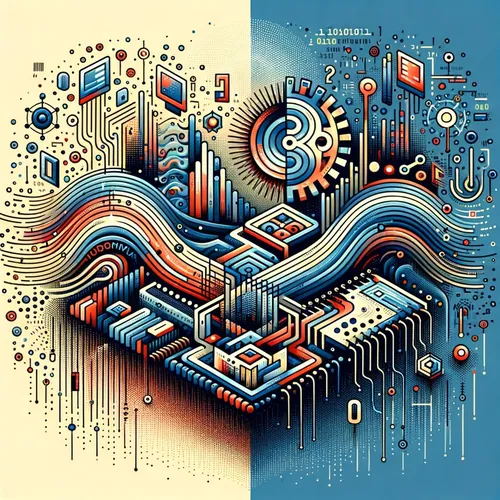Quantum Leaps: 1,000 Logical Qubits Unveiled, Topological Breakthroughs, and the Dawn of a New Era
- Author
- Quiet. Please
- Published
- Sat 07 Jun 2025
- Episode Link
- https://www.spreaker.com/episode/quantum-leaps-1-000-logical-qubits-unveiled-topological-breakthroughs-and-the-dawn-of-a-new-era--66440202
This is your Quantum Tech Updates podcast.
Welcome back to Quantum Tech Updates. I’m Leo, your Learning Enhanced Operator, and today we’ve got seismic shifts to unpack in the world of quantum hardware. If you blinked this week, you missed a moment that may well define the next era of technology.
Picture this: a coalition of researchers from IBM and the Shanghai Quantum Institute just unveiled a superconducting quantum chip boasting over 1,000 logical qubits. That number isn’t just a record; it’s a crossing of the Rubicon. For years, we’ve talked about noisy, intermediate-scale quantum machines—remarkable but limited. This chip finally puts fully error-corrected, logical qubits into the equation, not just for isolated science experiments, but for tackling real-world challenges previously deemed impossible.
Let’s put this in perspective. Classical bits, the workhorses of today’s computers, behave like binary light switches—either on or off, one or zero. Qubits, by contrast, are like tiny dancers spinning on an unpredictable stage: they can be on, off, or any mix in between, thanks to the magical principles of superposition and entanglement. But here’s where quantum gets dramatic. A single error-corrected—meaning “logical”—qubit actually requires dozens, sometimes hundreds, of regular “physical” qubits acting in concert. They constantly check each other, patch mistakes, and keep quantum information immune from the destructive noise of the environment. It’s like trying to hear a whisper in a hurricane while your friends form a shield around you and repeat it back, perfectly, over and over.
And now, for the first time, we have over a thousand of these logical qubits working together, paving the way for quantum calculations that could outpace classical supercomputers in chemistry, optimization, AI, and more. This isn’t just a faster processor—it’s a fundamentally different beast, one that rewrites what’s computationally possible.
But that’s only the opening act. The quantum industry has seen a flurry of activity this week. Investment is surging. Big bets are fueling hardware startups and established players alike, with companies like Quantinuum locking in $300 million in new funding and pushing their trapped-ion quantum processors to new heights. Their 32-qubit Model H2, when paired with Microsoft’s cutting-edge error correction, is now boasting record reliabilities—an auspicious sign as everyone races to scale up and stabilize these delicate machines.
And speaking of breakthroughs, don’t overlook Microsoft’s own Majorana 1 chip. Rolled out earlier this year, it’s the very first quantum chip to use topological qubits—built on mysterious particles called Majorana zero modes, hosted in new “topoconductor” materials. Unlike other qubit flavors, which are like tightrope walkers easily thrown off by the breeze, these topological qubits are inherently more robust—it's as if they walk with a safety net that resists the chaos of the quantum world. Microsoft’s published evidence in Nature adds serious credibility, and if their roadmap holds, we could see full fault-tolerant prototypes within a few years, thanks in part to DARPA’s accelerated quantum program.
Across the Atlantic, Oxford Quantum Circuits just dropped an ambitious roadmap aiming for 200 logical qubits by 2028 and a wild 50,000 by 2034. For context, 50,000 logical qubits could theoretically simulate chemical reactions, materials, or cryptographic protocols that would take classical supercomputers longer than the age of the universe to brute-force.
Think of this moment as the early days of powered flight. The Wright brothers’ first hop is now turning into commercial airliners, with national labs and private juggernauts all scrambling for the skies.
Standing in a quantum lab right now, I can almost feel the cold pulse of the cryostats, the symphony of lasers and microwaves, the...
